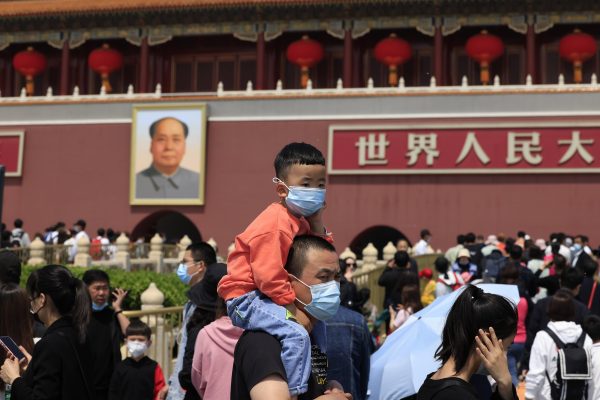
China released results from its 2020 census this week, reporting that its population grew to 1.41 billion last year, a narrow increase from the previous year. The total population figure exceeded expectations that the Chinese government was set to announce the first year-on-year decline in six decades, according to reporting from the Financial Times.
The marginal growth suggests that the country’s population size may be nearing its peak. China registered only 12 million births last year, an 18 percent plunge from the 14.65 million in 2019. The new births marked the lowest number since 1961 and represent the fourth consecutive year of declining births. While the rigid one child policy ended in 2016 and new restrictions were imposed in its stead — married Chinese couples were permitted to have two children — China’s fertility rate has not witnessed an uptick. According to the head of China’s National Bureau of Statistics, Ning Jizhe, the average number of children a woman will have in her lifetime slipped to a low of 1.3. At a press conference announcing the results, Ning described aging as “a basic national condition of China for a period of time to come.”
“China is facing a unique demographic challenge that is the most urgent and severe in the world,” Liang Jianzhang, a research professor of applied economics at Peking University and a demography expert told the New York Times, adding that “this is a long-term time bomb.”
Dropping fertility rates, however, are not unique to China. Results from the United States’ 2020 census also illustrated a drop in fertility with a total fertility rate of 1.64. In 2019, the European Union’s fertility rate was approximately 1.5 children per woman. In Japan, the number of births dropped to a record low in 2019. Still, China’s demographic trends pose a particularly tough challenge for a country trying to sustain economic growth while shifting its development objectives.
The lifting of some family planning restrictions have not injected a youthful burst and China’s population appears set to continue aging. The 15 to 59 population accounted for almost two thirds of the population, dropping seven points from a decade ago. Meanwhile the share of the Chinese population above the age of 60 swelled in the past ten years, from 13.3 percent to 18.7 percent. This trend has clear implications for China’s labor force as a smaller labor force will need to support a larger retiree population in the years ahead.
Enjoying this article? Click here to subscribe for full access. Just $5 a month.
Imbalances extend beyond age differences. The rural-urban divide deepened between 2010 and 2020. Last year, nearly 64 percent of Chinese people lived in urban areas, compared to 36 percent in rural areas. Over the past decade, the share of urban population climbed by more than 14 percentage points, accounting for an increase in more than 236 million people, while the rural population shrank by 164 million.
China also has one of the world’s most skewed sex-ratio. Males accounted for 51.24 percent of the national population, while the proportion of females stood at 48.76 percent in 2020, with nearly 35 million more men than women. Since the late 2000s, “the government’s pronatalist, pro-marriage propaganda aimed at Han Chinese women has only become more intense, as policymakers continue to view women primarily as reproductive tools to realize the nation’s development goals,” wrote Leta Hong Finscher, adjunct professor at Columbia University and author of “Betraying Big Brother: The Feminist Awakening in China and Leftover Women: The Resurgence of Gender Inequality in China.” (These campaigns stand in stark contrast to draconian policies employed in Xinjiang in recent years, slowing the birthrate among the Uyghur communities.)
Diplomat Brief Weekly Newsletter N Get briefed on the story of the week, and developing stories to watch across the Asia-Pacific. Get the Newsletter
For now, some restrictions remain while the government urges the country to “achieve an appropriate fertility level.” However, as the central government faces down the challenge of improving the well-being of the most populous country with an increasingly tenuous economic model, its leaders may come to favor more hands-on policies. “With Beijing’s predilection for numerical targets, it is easy to imagine this resulting in a 180-degree inversion of the anti-natalist tactics pursued during the decades of the one-child policy, with local Party cadres graded on their success in increasing — rather than reducing — birth rates in their jurisdictions,” wrote Carl Minzner, law professor at Fordham University.





